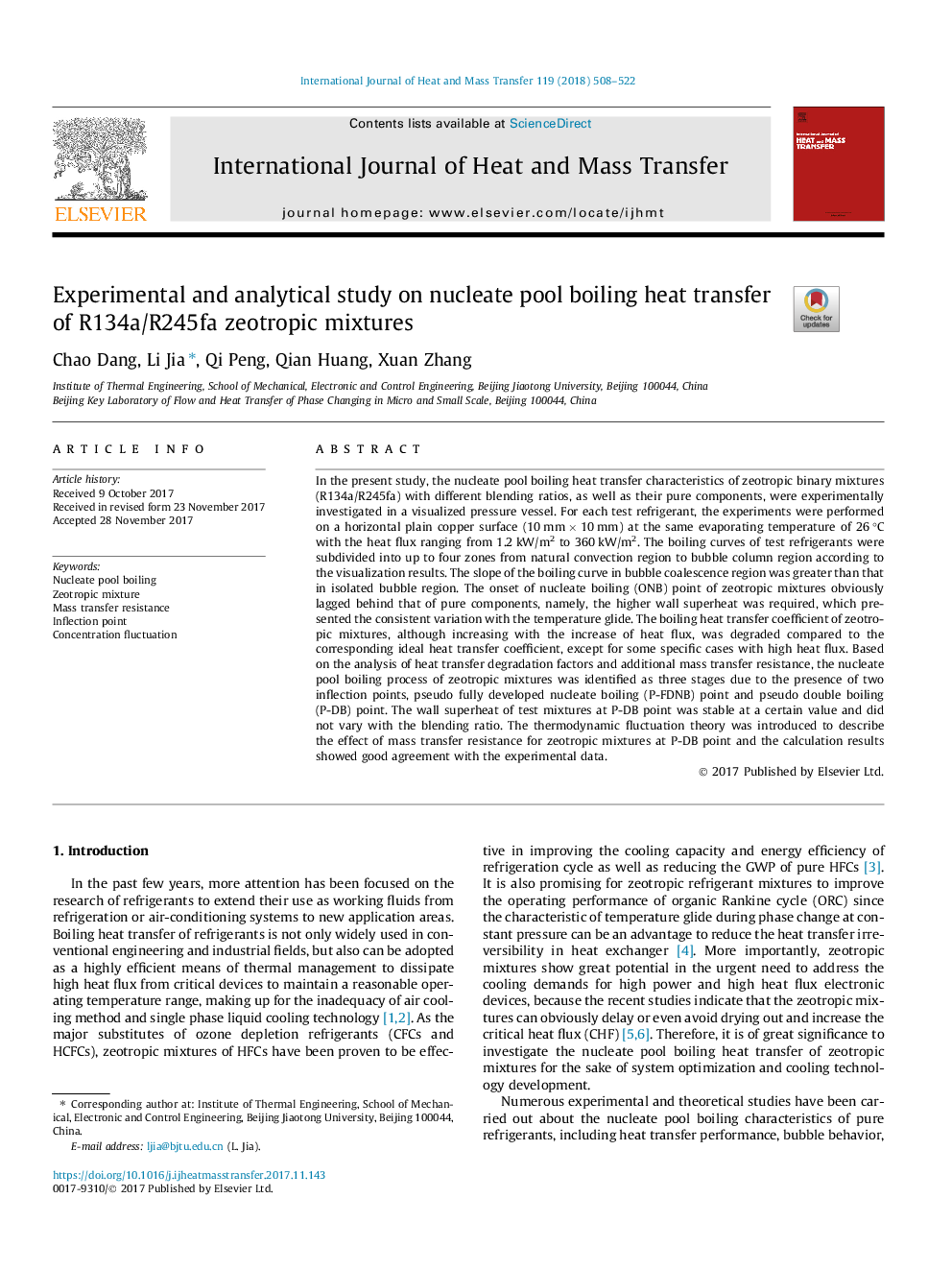| Article ID | Journal | Published Year | Pages | File Type |
|---|---|---|---|---|
| 7054687 | International Journal of Heat and Mass Transfer | 2018 | 15 Pages |
Abstract
In the present study, the nucleate pool boiling heat transfer characteristics of zeotropic binary mixtures (R134a/R245fa) with different blending ratios, as well as their pure components, were experimentally investigated in a visualized pressure vessel. For each test refrigerant, the experiments were performed on a horizontal plain copper surface (10â¯mmâ¯Ãâ¯10â¯mm) at the same evaporating temperature of 26â¯Â°C with the heat flux ranging from 1.2â¯kW/m2 to 360â¯kW/m2. The boiling curves of test refrigerants were subdivided into up to four zones from natural convection region to bubble column region according to the visualization results. The slope of the boiling curve in bubble coalescence region was greater than that in isolated bubble region. The onset of nucleate boiling (ONB) point of zeotropic mixtures obviously lagged behind that of pure components, namely, the higher wall superheat was required, which presented the consistent variation with the temperature glide. The boiling heat transfer coefficient of zeotropic mixtures, although increasing with the increase of heat flux, was degraded compared to the corresponding ideal heat transfer coefficient, except for some specific cases with high heat flux. Based on the analysis of heat transfer degradation factors and additional mass transfer resistance, the nucleate pool boiling process of zeotropic mixtures was identified as three stages due to the presence of two inflection points, pseudo fully developed nucleate boiling (P-FDNB) point and pseudo double boiling (P-DB) point. The wall superheat of test mixtures at P-DB point was stable at a certain value and did not vary with the blending ratio. The thermodynamic fluctuation theory was introduced to describe the effect of mass transfer resistance for zeotropic mixtures at P-DB point and the calculation results showed good agreement with the experimental data.
Keywords
Related Topics
Physical Sciences and Engineering
Chemical Engineering
Fluid Flow and Transfer Processes
Authors
Chao Dang, Li Jia, Qi Peng, Qian Huang, Xuan Zhang,
